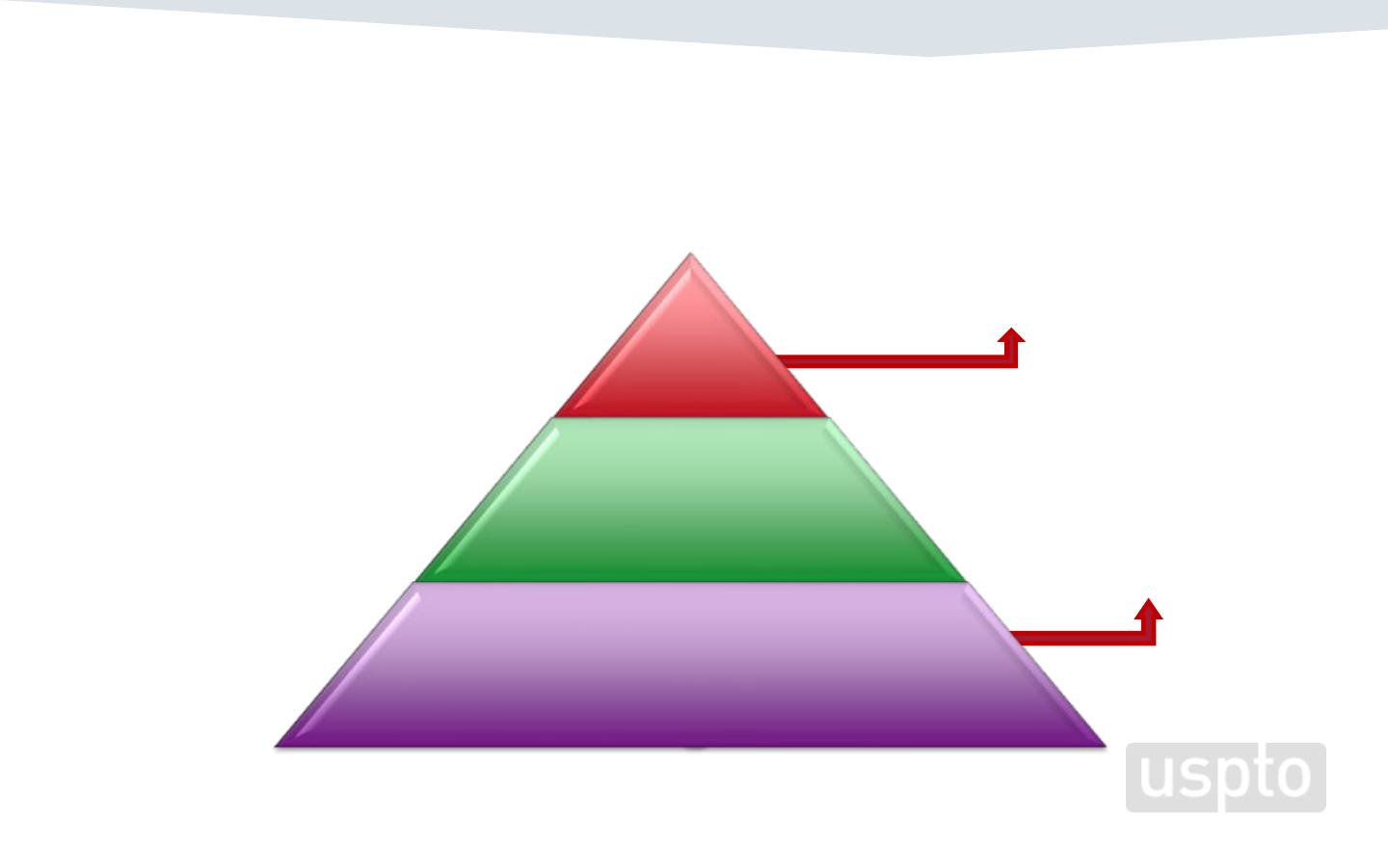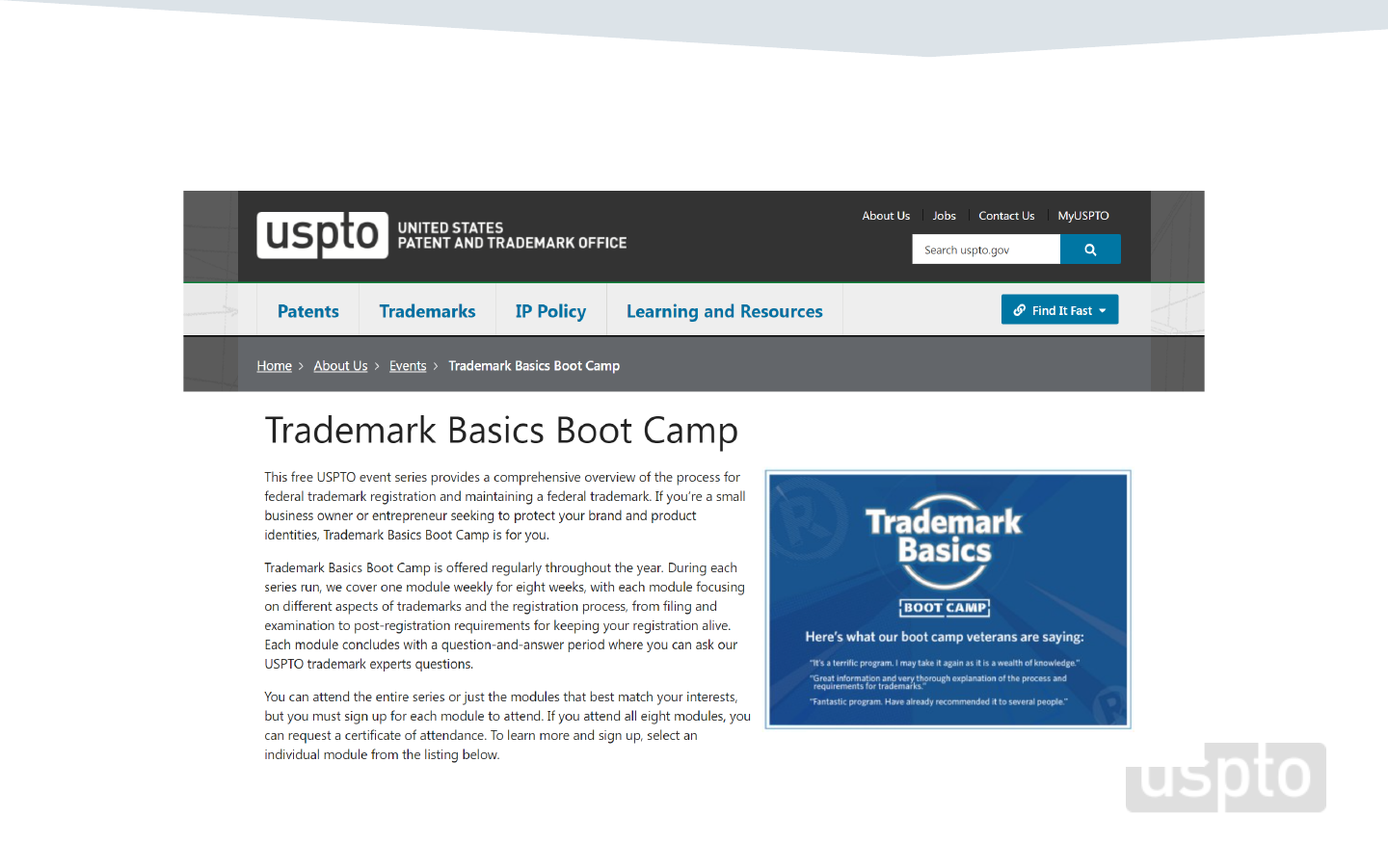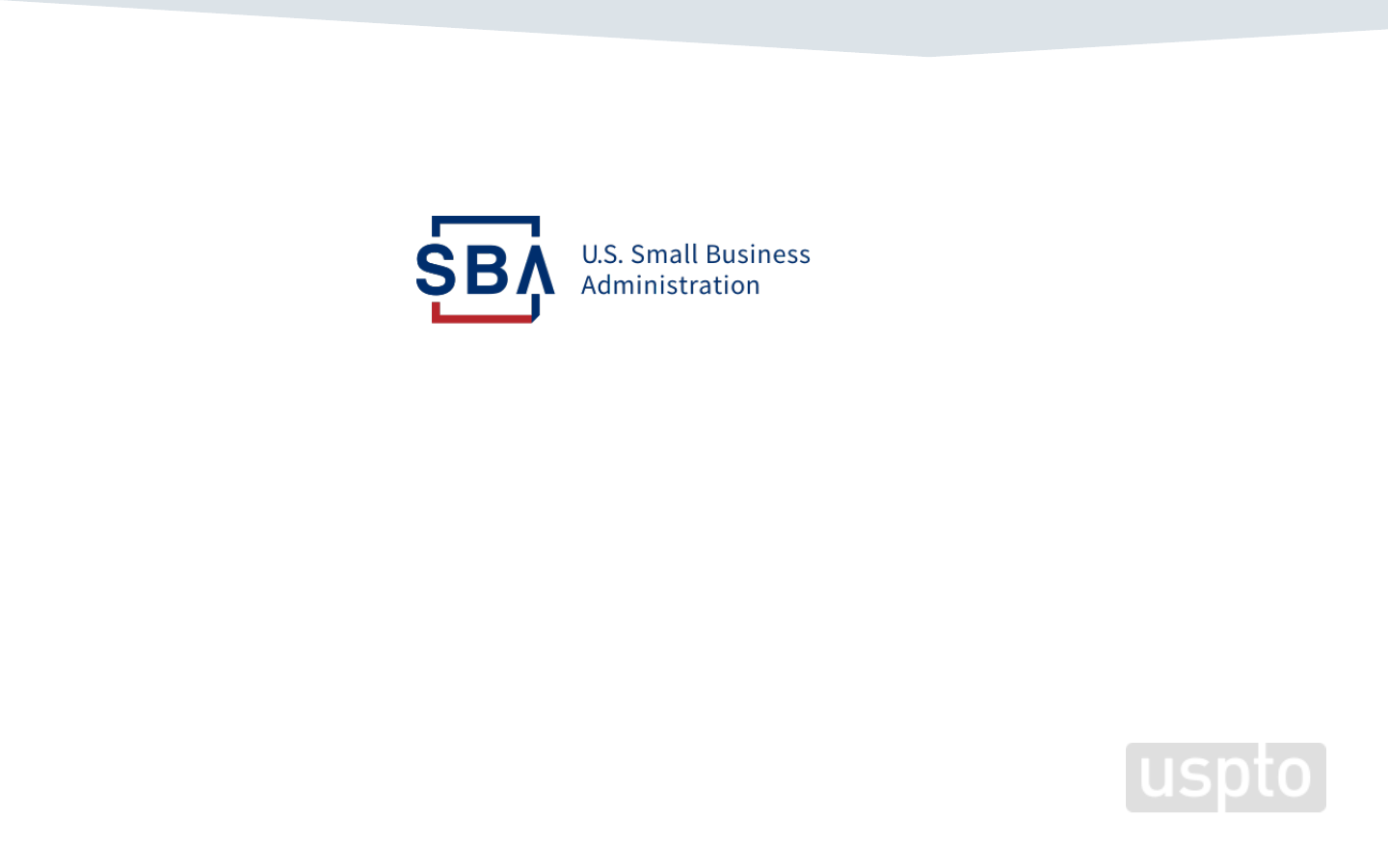

Intellectual property basics
Revised: October 2020

Notice
This content is for informational purposes only and is not legal advice.
Please consult with appropriate sources for legal authority and guidance on
these matters.

What is the USPTO?
The USPTO is the federal agency that grants U.S. patents and registers
trademarks. The agency also advises the president and federal agencies on
intellectual property (IP) policy, protection, and enforcement, and promotes
stronger and more effective IP protection around the world.
Mission
Fostering innovation, competitiveness, and economic growth, domestically and
abroad, to deliver high quality and timely examination of patent and trademark
applications, guiding domestic and international intellectual property policy,
and delivering intellectual property information and education worldwide, with
a highly skilled, diverse workforce.
4

USPTO offices
Detroit
– Operational since July 2012
Denver
– Byron G. Rogers Federal Building
– Operational since July 2014
Silicon Valley
– San Jose City Hall Building
– Operational since October 2015
Dallas
– Terminal Annex Federal Building
– Operational since November 2015
5

Intellectual propertyReal property
What is intellectual property?
6

Types of intellectual property
©
®
7

Patents

What is a patent?
• A property right
– Right to exclude others from making, using,
selling, offering for sale, or importing the claimed
invention
– Limited term
– Territorial: protection only in territory where granted
– NO world-wide patent
• U.S. government grants the property right in
exchange for disclosure of the invention
9

Utility
Protects how an invention
works, functions, or is made
for 20 years from filing date
• Process
• Machine
• Article of manufacture
• Composition of matter
Design
Protects the way a product
or article looks, the
ornamental expression for
15 years from the date of
grant
Plant
Protects newly invented
strains of asexually
reproducing flowering
plants, fruit trees, and
other hybrid plants for 20
years from filing date
Types of patents
10

Benefits of a patent
• Gain entry into a market
• Deter others from entering a market
• Assert/enforce rights against an infringer
• Collateral to obtain funding
• Develop a business around an invention
• A marketing tool, to promote unique aspects of a
product
• Create revenue–sell or license, like other property

What is patentable?
New,
nonobvious,
useful, and
clearly
described
Method
of using
Chemical
compos-
ition
Method
of
making
Product
Improve-
ments
thereof
12

Patent claim scope
Invention
Too
broad/general
Not valuable
Not patentable
Too
specific
What should a
patent application
claim?
13

Trademarks

What is a trademark?
• Word, name, symbol,
color, sound or scent (or
a combination thereof)
• Identifies the source of
products or services
Note: A trademark is not a business license. Check
state and local regulations regarding requirements
for business formation and operation.
15

Federally registered trademarks
• Right to enforce nationally and bring legal action in
federal courts
• Right to use ®
• Right to record mark with Customs and use anti-
counterfeiting remedies
• May serve as basis for foreign filing
• Publication in U.S. Trademark database
®
®
16

https://www.uspto.gov/about-us/events/trademark-basics-boot-camp
USPTO resources
17

Copyrights
18

Copyright
• Protects original works of authorship,
including literary, dramatic, musical, artistic,
and other works fixed in a tangible medium
• Library of Congress administers
registration; USPTO advises the executive
branch on IP issues, including copyright
• © symbol can be used without registration
credit: copyright.gov
19

Things protected by copyrights
20

Trade secrets

What is a trade secret?
• Any information that derives economic value from being not
publically known or ascertainable
• Can be formulas, patterns, compilations, programs, devices, methods,
techniques, or processes
• All states have some sort of trade secret protection
• Defend Trade Secrets Act of 2016
• Theft of trade secrets 18 USC 1832
22

Examples of trade secrets
23

Why are trade secrets useful?
• Protects commercially valuable proprietary information, e.g.,
formulas, recipes, or business information that gives a competitive
advantage
• Customer lists
• Product formulations
• Search algorithms
• Trade secrets are not generally known and must be subject to
reasonable efforts to preserve confidentiality
• Prevent employees and contractors from disclosing your secrets to
competitors and the public
• No set term for protection
Credit: Steven Schatz/USPTO
24

How to lose a trade secret
• Failure to take adequate steps to prevent disclosure
– failure to protect the secret (locked cabinets, encrypted
files, double pass words)
– Lack of non-disclosure agreements, contracts, or written
policies with employees and contractors
• Owner or owner-authorized disclosure
• Reverse engineering
• Independent development
credit: Steven Schatz/USPTO
25

What’s protected? Examples Protection lasts for:
Utility patent
Inventions iPod, chemical fertilizer, process of
manipulating genetic traits in mice
20 years from the date of filing
regular patent application
Design patent
Ornamental (non functional)
designs
Unique shape of electric guitar,
design for a lamp
15 years
Plant patent
Newly invented strains of
asexually reproducing flowering
plants
20 years
Copyright
Books, photos, music, fine art,
graphic images, videos, films,
architecture, computer programs
Michael Jackson’s Thriller (music,
artwork and video), Windows
operating system
The life of the author plus 70 years
(or some works, 95 years from
pub., and others 120 years from
creation)
Trade secret
Formulas, methods, devices, or
compilations of information
which is confidential and gives a
business an advantage
Coca-Cola formula, survey methods
used by a pollster, new invention for
which patent application has not
been filed
As long as information remains
confidential and functions as a
trade secret
Trademark
Words, symbols, logos, designs,
or slogans that identify and
distinguish products or services
Coca-Cola name and distinctive logo,
Pillsburydoughboy character
As long as mark is in continuous
use in connection with goods or
services – renew by year 6, then at
year 10, then every 10 years
Overview of intellectual property
26

IP as a business strategy

IP strategy is a business strategy
• IP ownership:
– Is a property right that can add value to a company’s
assets
– Is attractive to investors and buyers
– Can deter infringement lawsuits
– Can increase leveraging power for mergers and
acquisitions
28

Developing an IP Strategy
• Assess your company’s IP assets and prioritize
• Know your competition & what they’re up to
• What’s the pace of innovation & opportunities for growth?
• Determine the best way to protect your IP
– Patents (utility, design, plant),
– Trademarks (trademark, service marks, geographic certification, etc.)
– Copyrights
– Trade secrets
• Develop a plan, set goals and implement
• Get help!
29

Signature programs
Help for applicants

Office of Innovation webpage
33
www.uspto.gov/InnovationOutreach

USPTO resources
Help for applicants

www.uspto.gov/inventors/assessment
IP Awareness Assessment Tool
35

Patent Public Search Tool
• Provides more convenient,
remote, and robust full-text
searching of all U.S. patents
and published patent
applications.
• Replacing legacy search tools
like PubEAST, PubWest, PatFT,
and AppFT.
• Allows the public to access
search tools used by our patent
examiners.
36

Patent Public Search Tool Benefits
• Free, cloud-based platform is available to all users via the internet,
with no account necessary.
• Text searching optical character recognition (OCR) scanned US
patents issued prior to 1976 is now available
• Gives users the option of multiple layouts with multiple tools to view
more data at once.
Patent Public Search tool:
https://ppubs.uspto.gov/pubwebapp/
Resource webpage:
https://ppubs.uspto.gov/pubwebapp/static/pages/landing.html
37





